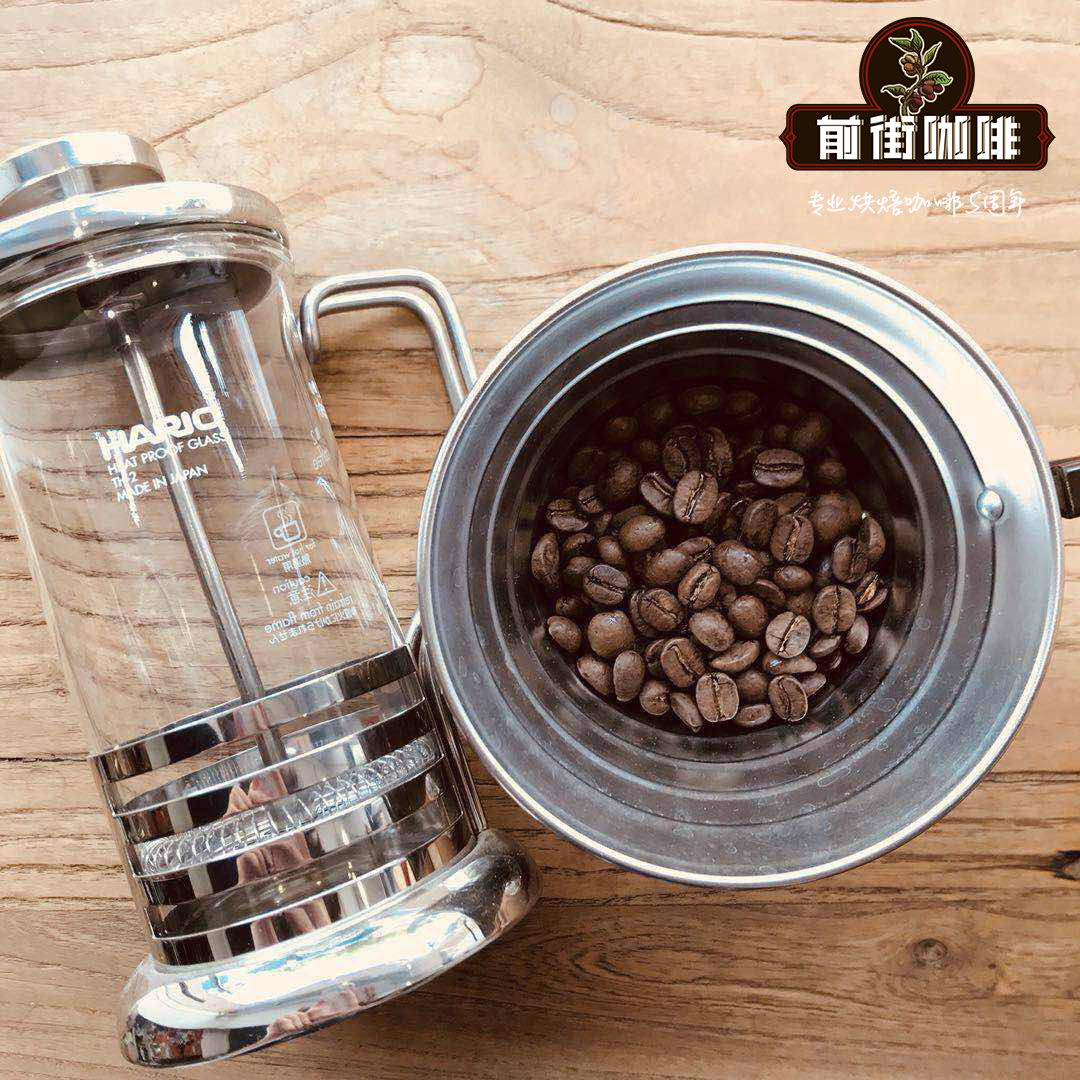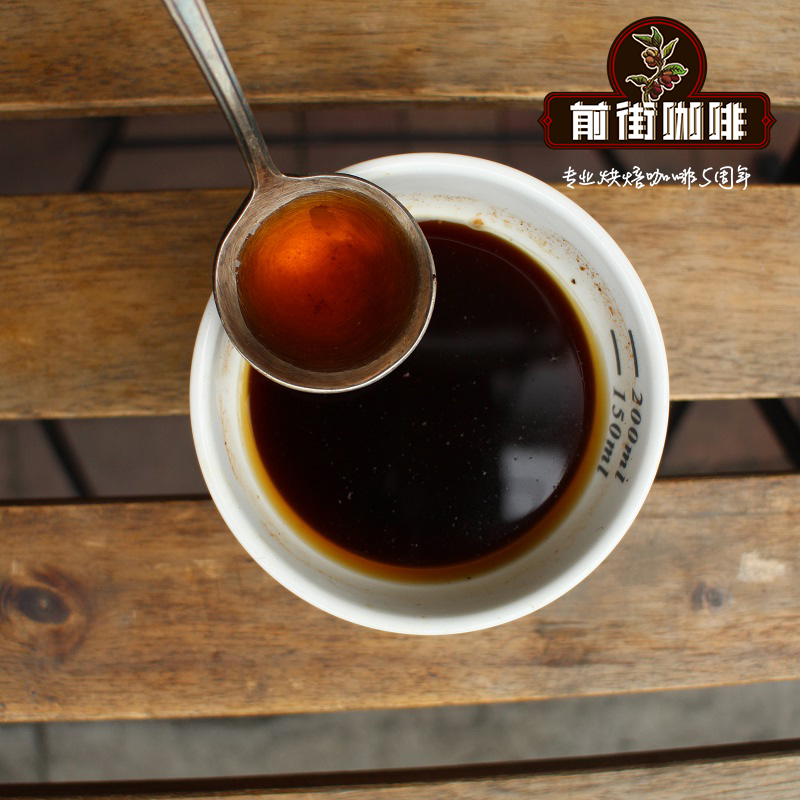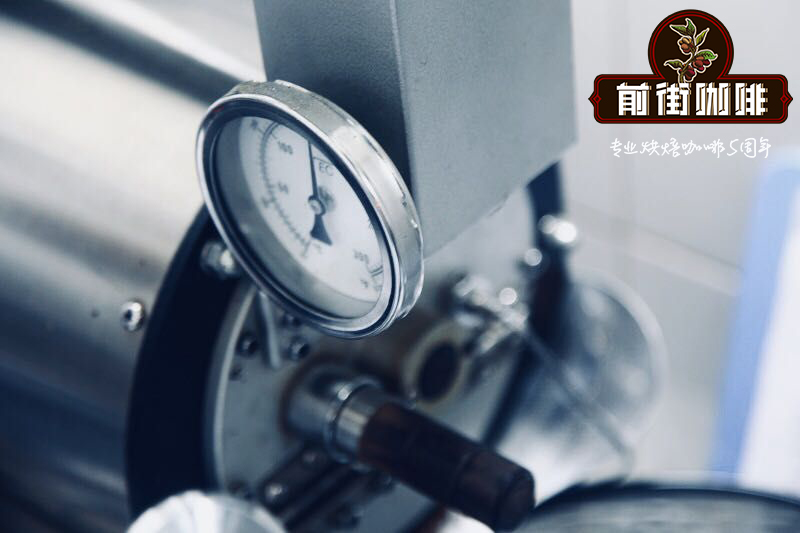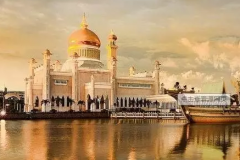The characteristics of Indian coffee legendary: Indian monsoon Malaba coffee is Indian coffee good?

Professional coffee knowledge exchange more coffee bean information please follow the coffee workshop (Wechat official account cafe_style)
Indian monsoon Malaba coffee
In a previous post about the history of the branch of coffee: stunned. 90% + of the world's coffee actually originated from the same coffee tree! When it comes to the origin of coffee in Ethiopia, Arab merchants brought it to Yemen, and then thousands of years later, a Yemeni woman risked death to give coffee seeds to the Indian prince because of a legendary love story. From then on, the Tibika went global from India. India is an extremely important part of the early history of coffee.
Some people say that Indian coffee is like spices, because Indians love spices, and the whole country has a strong flavor of spice curry. But what is the historical origin of spiced coffee? Does Indian coffee really taste like spices? Next, Qianjie Coffee will introduce to you!
The most important adventurer in history-- businessman
In the 17th and 18th centuries, merchants shipped coffee from India to Europe by sailboat. It takes at least half a year to make a trip. It is conceivable that the raw coffee beans are placed at the bottom of the cabin and absorb the moisture and salty taste of the sea all the way. it also happens from time to time that they are soaked and then dried and then soaked again. Coffee raw beans were basically completely deteriorated by the time they were shipped to Europe. The green of the coffee completely faded and began to turn yellow.
Yellowed Indian coffee
It happened by accident: Europeans fell in love with the coffee, which had no sour taste and smelled of straw spice. The golden alternative coffee from ocean is very popular.
In 1869, an important historical event, the Suez Canal, was opened, and shipping also entered the era of steamboat from the era of sailing. The voyage time from India to Europe has been greatly shortened. With the current concept of boutique coffee, theoretically speaking, shorter shipping time and better shipping conditions will be equal to more fresh and high-quality coffee! And then-- in theory.
The real reaction of Europeans is:
Why has the coffee suddenly changed!
Heavy-flavored Europeans who are used to being abused can't help falling in love with the flavor of coffee that has been spoiled by the sea. The smart businessmen who were forced to have no choice but to make a sharp drop in orders and could not survive began to look for problems and find ways.
Geography class time
Open the familiar high school atlas.
Due to the strong thermal difference between land and sea and the seasonal movement of wind pressure belt, India has become a typical representative country of tropical monsoon climate. The year-round high temperature and obvious dry rain are the remarkable characteristics of the monsoon climate. It is the rainy season from June to September under the influence of the southwest monsoon from the Indian Ocean, and the dry season from October to May under the influence of the northeast monsoon from Eurasia. The side facing the moist southwest monsoon is famous-the coast of Malabar in India.
The businessman's countermeasure is: isn't shipping better and faster? It would be better to pile it up at the seaside for a few months, create a smell of decay and then take it to Europe! So they took advantage of the humid southwest monsoon blowing on the coast of Malaba from June to September and blew the coffee raw beans ready for shipment on the coast of Malaba facing the wet monsoon for a few months.
This is the legend: Indian monsoon Malaba coffee India Monsooned Malabar Coffee
This is the best golden coffee from the Indian monsoon coast! No acid, mellow, full of tropical ocean flavor.
India
There are several reasons why Indian coffee is popular with coffee lovers, but the most important is a process used on coffee beans, often referred to as the "monsooning" process.
Monsoon coffee (rainy season Malaba) is a unique coffee from southern India using a typical air-drying process, specially stored in an open warehouse and exposed to the monsoon to increase viscosity and reduce acidity.
Monsoon coffee is stored in a special warehouse until the monsoon arrives, and the ventilation structure is designed to allow the moist monsoon to circulate between the coffee beans, so that its volume expands and shows a mellow but strong mildew smell. The monsoon process is labor-intensive: coffee is spread out in special ventilated warehouses and raked or turned by hand to allow coffee beans to absorb moisture in the moist wind. The whole process takes 12 to 16 months, in which the coffee beans expand to twice their original volume and have a dull golden yellow. Then the coffee beans that are not fully inflated are picked out with extra processing, and the rest of the coffee is to be exported.
The aroma of this dried coffee is not very strong, but with the addition of water, a combination of strongly roasted nuts (dry-roasted peanuts), caramel and tobacco come to the nostrils.
Coffee producing areas in India:
Coffee is grown in the Gaozhi Mountains in western India, and the southwest monsoon is crucial to coffee growth there. In addition to Karnataka, good coffee is grown in Tellichery and Malabar in the southwestern state of Kerala, as well as in Nilgiris in the southeastern state of TamilNadu (formerly known as Madras).
India has plateaus and plains, mainly in the middle, and plains along the east and west coasts. Soil, water and climate are very suitable for growing coffee, and there are many varieties of coffee that can be planted, mainly Arabica. Robusta was introduced at the end of the 19th century and accounted for a certain proportion. Monsoon coffee comes from the southern state of Karataka represented by Mysore and Tamil Nadu represented by Madras.
The best Indian coffee is also classified as Arabian plantation coffee, with the best grades A, B, C and T. "monsoon" coffee is divided into high-quality MonsoonedMalabar (AA) coffee and "monsoon" Basan Nicoli (MonsoonedBasanically) coffee. India also produces some bean-shaped berry coffee. October to February is a good time to make "monsoon" coffee. Coffee beans are harvested from June to September every year, and from December to February next year, it is the season for processing Indian boutique coffee.

The characteristics of Indian coffee:
Monsoon coffee is the most representative type of coffee in India. In fact, India is the first country in Asia to grow coffee. The cultivation of Indian coffee originated from their colonists-the British. As early as the 17th and early 18th centuries, the English were not as addicted to tea as they are now, they liked coffee. The coffee growing industry in India has grown rapidly under the demand and promotion of the British.
Strictly speaking, monsoon coffee can not be attributed to coffee varieties, but a unique processing method of raw coffee beans, is a new flavor created inadvertently. In the 17th and 18th centuries, India shipped coffee beans to Europe by sailboat, which took six months. The raw beans were placed on the bottom of the barn and absorbed the moisture and salty taste of the sea. The raw beans arrived in Europe long ago. The color changed from dark green to the yellowish brown of rice. The acidity of the coffee almost disappeared, but it unexpectedly developed a strong nutty and cereal flavor. It tasted full, with a bit of black rice tea flavor. Surprisingly, Nordic people like this kind of golden alternative coffee very much.
Monsoon coffee needs to be made with sun beans. The factory where beans are stored faces to the west. The beans are laid flat in the field, and the windows are all open to catch the salty monsoon from the southwest. After reaching a certain extent, put it into the bag, but the coffee beans should not be too full, and the coffee bags should not be piled too dense so as not to be airtight and moldy, and it is time-consuming and labor-consuming to pour out coffee beans and replace sacks from time to time to avoid mold. This period of time is about 12 to 16 weeks, and after it is ripe, it will be fumigated to drive out the weevil, and finally to sift out the failed beans that have not turned golden.
After at least six months to a year of monsoon blowing, the quality and quantity of beans have changed significantly. Coffee beans will swell to twice their size, reduce their weight and density, and have a moisture content of about 13%.
When steamships shorten the journey time, coffee producers find that consumers still want beans of the same color and taste that are affected by long trips. In order to recreate the flavor of the original coffee, the "monsoon" process was used.
The Indian coffee market:
Currently, the Coffee Council of India (IndianCoffeeBoard) controls the entire coffee industry, buying coffee and then selling it. Coffee is sold at mass auctions. These coffees are mixed together to reach a certain trade volume, which eliminates the differences between manors and regions, so that many high-quality coffee producers lack sufficient motivation to produce unique and high-quality coffee beans. The government tried to solve this problem in 1992, and through its efforts, the famous ValleyNuggets coffee was obtained through seeds from A-grade coffee plantations in several quality coffee producing areas.
How should Indian monsoon coffee be roasted for such a special coffee? Qianjie coffee shares roasting ideas, the bean density of Indian monsoon coffee is general, medium firepower rises steadily when roasting, the yellowing point is about 4 minutes 50 seconds, open the throttle when an explosion, maintain firepower, the temperature is about 184.4 ℃, 2 minutes 30 seconds after an explosion. It belongs to medium-deep baking, but because of the special treatment, the color after baking is very light, and the chromaticity of baking is quite different from that of normal baking.

Qianjie coffee is suggested to be brewed: French kettle
Parameters: moderate grinding, powder / water ratio 1:13, water temperature 85 ℃, extraction time two minutes and ten seconds.
Technique: 15 grams of powder, pour 195 grams of water, stir the coffee powder bed in one minute, press down in one minute and 50 seconds, and the whole extraction time is two minutes and ten seconds.
Flavor: smooth on the palate, body is thick, with soft acidity, with nutty, black rice tea, cream chocolate flavor, sucrose back to sweet.
Important Notice :
前街咖啡 FrontStreet Coffee has moved to new addredd:
FrontStreet Coffee Address: 315,Donghua East Road,GuangZhou
Tel:020 38364473
- Prev

Coffee origin Indian monsoon Malaba coffee Indian "monsoon coffee" coffee characteristics
Before the Indian monsoon Malaba Coffee, a tweet about the history of coffee species: it is amazing that 90% of the world's coffee originated from the same coffee tree! It was said that coffee originated in Ethiopia, and Arab businessmen brought it to Yemen, and then a thousand years later, because of a legendary love story, a Yemeni woman risked death to give coffee seeds to the prince of India.
- Next

Raw bean treatment: typical air-drying process Indian monsoon coffee treatment, Indian coffee history
Before the Indian monsoon Malaba Coffee, a tweet about the history of coffee species: it is amazing that 90% of the world's coffee originated from the same coffee tree! It was said that coffee originated in Ethiopia, and Arab businessmen brought it to Yemen, and then a thousand years later, because of a legendary love story, a Yemeni woman risked death to give coffee seeds to the prince of India.
Related
- Detailed explanation of Jadeite planting Land in Panamanian Jadeite Manor introduction to the grading system of Jadeite competitive bidding, Red bid, Green bid and Rose Summer
- Story of Coffee planting in Brenka region of Costa Rica Stonehenge Manor anaerobic heavy honey treatment of flavor mouth
- What's on the barrel of Blue Mountain Coffee beans?
- Can American coffee also pull flowers? How to use hot American style to pull out a good-looking pattern?
- Can you make a cold extract with coffee beans? What is the right proportion for cold-extracted coffee formula?
- Indonesian PWN Gold Mandrine Coffee Origin Features Flavor How to Chong? Mandolin coffee is American.
- A brief introduction to the flavor characteristics of Brazilian yellow bourbon coffee beans
- What is the effect of different water quality on the flavor of cold-extracted coffee? What kind of water is best for brewing coffee?
- Why do you think of Rose Summer whenever you mention Panamanian coffee?
- Introduction to the characteristics of authentic blue mountain coffee bean producing areas? What is the CIB Coffee Authority in Jamaica?

